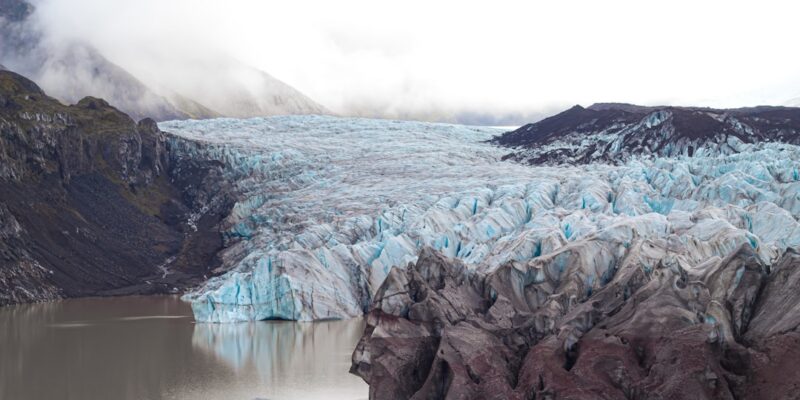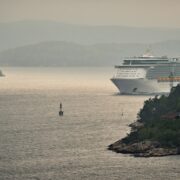
Exploring New Zealand’s Glaciers on Foot
New Zealand is known for its stunning landscapes, and one of the most captivating features of the country is its glaciers. Nestled in the Southern Alps, these icy wonders attract visitors from all over the world. Glaciers play a significant role in shaping New Zealand’s landscape and have become an integral part of the country’s tourism industry.
The glaciers in New Zealand are remnants of the last ice age and are a result of thousands of years of snowfall and compression. The most famous glaciers in the country are Fox Glacier and Franz Josef Glacier, located on the West Coast of the South Island. These glaciers are easily accessible and offer breathtaking views of towering ice formations and pristine blue ice caves.
Key Takeaways
- New Zealand is home to many stunning glaciers, including Fox Glacier, Franz Josef Glacier, and Tasman Glacier.
- Glaciers are formed by the accumulation of snow and ice over time, and they move slowly due to gravity and pressure.
- When preparing for a glacial hike, it’s important to wear warm, waterproof clothing and bring appropriate gear like crampons and ice axes.
- Popular glacial hiking trails in New Zealand include the Fox Glacier Valley Walk, the Franz Josef Glacier Valley Walk, and the Tasman Glacier View Track.
- Fox Glacier is a must-visit destination, offering stunning views of the glacier and surrounding mountains.
Understanding Glaciers: Formation and Movement
Glaciers are formed when snow accumulates over time and compresses into ice. This process takes place in areas where snowfall exceeds melting, such as high-altitude mountain ranges. As more snow accumulates, the weight of the snow compresses the layers beneath it, turning it into ice.
Glacial movement is a fascinating phenomenon that occurs due to gravity and the weight of the ice. As the glacier moves downhill, it erodes the landscape, creating U-shaped valleys, cirques, and moraines. Glacial movement can be slow or fast, depending on various factors such as temperature, slope gradient, and amount of snowfall.
The movement of glaciers has a significant impact on the environment. As glaciers advance, they reshape the land by carving out valleys and depositing sediment. Glacial meltwater also plays a crucial role in maintaining river systems and providing freshwater to surrounding ecosystems.
Preparing for a Glacial Hike: What to Wear and Bring
Glacial hiking is an exhilarating experience but requires proper preparation to ensure safety and comfort. When embarking on a glacial hike, it is essential to wear appropriate clothing and bring the necessary equipment.
Layering is key when dressing for a glacial hike. Start with a moisture-wicking base layer to keep you dry, followed by an insulating layer to keep you warm. A waterproof and windproof outer layer is crucial to protect against the elements. It is also important to wear sturdy hiking boots with good ankle support and traction.
In terms of equipment, a backpack is essential to carry water, snacks, extra layers, and any other necessary items. It is also advisable to bring crampons or ice cleats to provide traction on icy surfaces. A helmet and an ice axe may be required for more advanced glacial hikes.
Popular Glacial Hiking Trails in New Zealand
| Trail Name | Location | Distance (km) | Difficulty | Duration (hours) |
|---|---|---|---|---|
| Franz Josef Glacier | West Coast | 12 | Moderate | 4 |
| Tasman Glacier | Aoraki/Mount Cook National Park | 7 | Easy | 2 |
| Rob Roy Glacier | Wanaka | 10 | Moderate | 3 |
| Hooker Valley Track | Aoraki/Mount Cook National Park | 10 | Easy | 3 |
| Fox Glacier | West Coast | 6 | Easy | 2 |
New Zealand offers a range of glacial hiking trails that cater to different skill levels and preferences. One of the most popular trails is the Fox Glacier Valley Walk, which provides stunning views of Fox Glacier and its surrounding mountains. This trail is relatively easy and suitable for all fitness levels.
For those seeking a more challenging hike, the Franz Josef Glacier Valley Walk offers a longer and more strenuous route. This trail takes you closer to the glacier’s terminal face and provides an up-close look at its impressive ice formations.
Another popular glacial hiking trail is the Hooker Valley Track, located near Mount Cook National Park. This trail offers breathtaking views of the Southern Alps and leads you to the stunning Hooker Lake, where you can witness icebergs floating in the glacial lake.
Exploring Fox Glacier: A Must-Visit Destination
Fox Glacier is a must-visit destination for anyone traveling to New Zealand’s South Island. This glacier is located in Westland Tai Poutini National Park and offers a unique experience for visitors.
Fox Glacier has a rich history, with Maori legends telling stories of its creation. The glacier is named after Sir William Fox, who visited the area in the 19th century. Today, Fox Glacier is a popular tourist attraction, drawing visitors from around the world.
To make the most of your visit to Fox Glacier, it is recommended to take a guided tour. These tours provide valuable insights into the glacier’s formation, movement, and unique features. You can choose from a range of activities, including heli-hiking, ice climbing, and glacier walks.
Franz Josef Glacier: A World Heritage Site
Franz Josef Glacier is another iconic glacier in New Zealand and is recognized as a World Heritage Site. This glacier is located in Westland Tai Poutini National Park and offers a range of activities for visitors.
The Franz Josef Glacier is known for its dramatic ice formations and stunning blue ice caves. Guided tours are available for visitors to explore the glacier up close and personal. These tours provide an opportunity to witness the glacier’s unique features and learn about its formation and movement.
In addition to glacial hiking, there are other activities available in the Franz Josef Glacier area. Visitors can take scenic helicopter flights to get a bird’s-eye view of the glacier and surrounding mountains. There are also hot pools nearby where you can relax and unwind after a day of exploring.
Tasman Glacier: The Largest Glacier in New Zealand
Tasman Glacier is the largest glacier in New Zealand and is located in Aoraki/Mount Cook National Park. This glacier spans over 23 kilometers and offers a range of activities for visitors.
One of the best ways to explore Tasman Glacier is by taking a boat tour on the glacial lake. These tours provide an opportunity to get up close to the icebergs that have calved off the glacier. You can also take a scenic flight over the glacier to witness its vastness from above.
For those seeking a more adventurous experience, there are guided hikes available on Tasman Glacier. These hikes take you onto the glacier itself, where you can witness its unique features and learn about its formation and movement.
Hidden Gems: Lesser-Known Glaciers to Discover
While Fox Glacier, Franz Josef Glacier, and Tasman Glacier are the most well-known glaciers in New Zealand, there are also lesser-known glaciers that offer unique experiences for visitors.
One such glacier is the Rob Roy Glacier, located in Mount Aspiring National Park. This glacier is known for its stunning waterfalls and alpine meadows. The Rob Roy Glacier Track is a popular hiking trail that takes you through lush beech forest and offers breathtaking views of the glacier.
Another hidden gem is the Mueller Glacier, located in Aoraki/Mount Cook National Park. This glacier is accessible via the Mueller Hut Route, a challenging hike that rewards you with panoramic views of the surrounding mountains and glaciers.
Safety Tips for Glacial Hiking in New Zealand
Glacial hiking can be a thrilling adventure, but it is important to prioritize safety. Here are some tips to ensure a safe and enjoyable experience:
1. Always go with a guide: Glacial terrain can be unpredictable, and it is essential to have an experienced guide who knows the area well.
2. Dress appropriately: Wear layers to regulate your body temperature and protect against the elements. Don’t forget to wear sturdy hiking boots with good ankle support.
3. Stay hydrated: Glacial hiking can be physically demanding, so make sure to drink plenty of water throughout the hike.
4. Follow instructions: Listen to your guide’s instructions and follow their advice regarding safety precautions.
5. Be aware of crevasses: Glaciers are full of hidden crevasses, so it is important to stay on marked trails and avoid venturing off on your own.
The Importance of Sustainable Tourism in Glacial Regions
As tourism continues to grow in glacial regions, it is crucial to prioritize sustainable practices to preserve these fragile environments for future generations. Glacial regions are particularly vulnerable to the impacts of climate change, and responsible tourism can help mitigate these effects.
Sustainable tourism practices include minimizing waste, conserving water, and reducing carbon emissions. It is also important to support local communities and businesses that prioritize environmental stewardship.
By practicing sustainable tourism, we can ensure that future generations will have the opportunity to experience the beauty of New Zealand’s glaciers and appreciate the importance of these natural wonders.
New Zealand’s glaciers are a testament to the country’s stunning natural beauty. From Fox Glacier to Franz Josef Glacier and Tasman Glacier, these icy wonders offer a range of activities for visitors to explore and appreciate.
When embarking on a glacial hike, it is important to be prepared with the right gear and equipment. Safety should always be a priority, and it is advisable to go with a guide who knows the area well.
As tourism continues to grow in glacial regions, it is crucial to practice sustainable tourism to preserve these fragile environments. By doing so, we can ensure that future generations will have the opportunity to experience the awe-inspiring beauty of New Zealand’s glaciers.
FAQs
What is glacier hiking?
Glacier hiking is a type of outdoor activity that involves walking on a glacier with the help of specialized equipment such as crampons, ice axes, and ropes.
Where can I go glacier hiking in New Zealand?
New Zealand has several glaciers that are popular for hiking, including Franz Josef Glacier, Fox Glacier, and Tasman Glacier.
What is the best time of year to go glacier hiking in New Zealand?
The best time to go glacier hiking in New Zealand is during the summer months (December to February) when the weather is warmer and the glaciers are less likely to be covered in snow.
Do I need any special equipment for glacier hiking?
Yes, you will need specialized equipment such as crampons, ice axes, and ropes. These can usually be rented from local tour operators.
Is glacier hiking dangerous?
Glacier hiking can be dangerous if proper safety precautions are not taken. It is important to go with a licensed and experienced guide who can ensure your safety.
What should I wear for glacier hiking?
You should wear warm, waterproof clothing and sturdy hiking boots. It is also recommended to bring gloves, a hat, and sunglasses to protect against the sun and snow glare.
How long does a typical glacier hiking tour last?
A typical glacier hiking tour can last anywhere from 2-6 hours, depending on the tour operator and the specific glacier being hiked.
Can children go glacier hiking?
Children can go glacier hiking, but it is important to check with the tour operator to see if there are any age restrictions or safety concerns. It is also recommended that children be physically fit and able to handle the demands of the hike.



















Your point of view caught my eye and was very interesting. Thanks. I have a question for you.
Your point of view caught my eye and was very interesting. Thanks. I have a question for you.
Your point of view caught my eye and was very interesting. Thanks. I have a question for you.